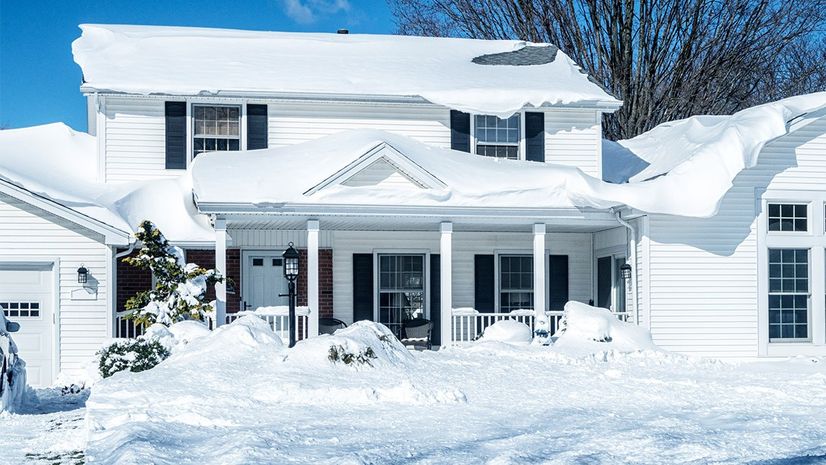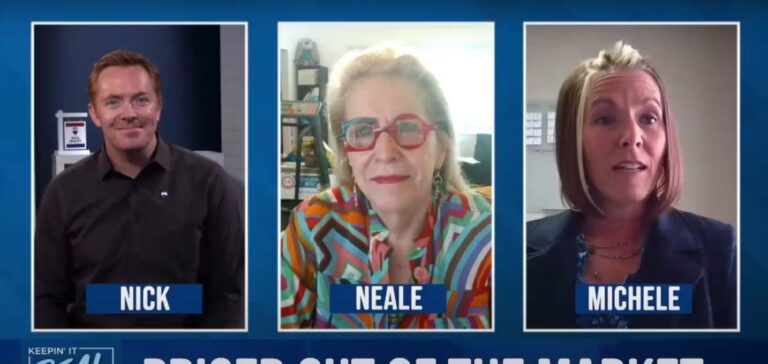
When you buy a home, there is usually a flurry of things you look forward to experiencing in winter. Watching that first snowfall through the living room window. Snuggling up by the crackling fireplace. Building a snowman or watching your kids make snow angels in the yard.
All of that creates wonderful memories. But some of the things that you discover during your first winter of homeownership can bring you crashing back to reality.
In my case, when we bought our 1920s suburban New York home, we had some rude awakenings. For example, the previous homeowners (empty nesters) told us their heating costs were a couple of hundred dollars per month. We moved in with our boys, who left lights on at every level and never shut down their gaming station. That first bill was a biggie, and it remained high no matter how much we tried to tamp down our electricity use (more on why later).
Surprise No. 2 arrived with the first major snowstorm. We’d moved from an apartment and didn’t realize that snowplows would scoot all the white stuff into a hedge-high barrier blocking our driveway, and making it impossible to leave without hours of shoveling. Also, we didn’t have shovels.
Surprise No. 3: the fireplaces. They were beautiful on the outside, but filthy on the inside. Our home inspection had said to get them cleaned, but it didn’t seem urgent. As it turned out, they were caked with creosote—a toxic, flammable residue. Removing it required us to hire a chimney sweep with a huge mechanical brush-grinder. The noise was horrendous and the bill was not small—but at least we were safe.
I’m hardly the only homeowner who’s been hit with some scary, expensive, annoying curveballs during my first winter owning a house. Heed these stories on what else may be in store—and what you can do to prepare.
1. High heating bills
Don’t make the mistake I made and assume fuel costs will be equal to what the sellers paid.
“If the previous owner of your home was a senior resident, your heating bill might be significantly higher than advertised. In some areas, seniors get discounted energy rates,” says Erin Dunlap, a Denver-area real estate agent who specializes in flipping homes and blogs about home improvement at List in Progress.
How to prepare: “Call the utility company in advance to see whether past bills were discounted so you know what to expect when winter heating bills arrive,” suggests Dunlap.
If your new home’s heating bills are higher than expected, consider investing in a smart thermostat with additional room sensors.
“You’ll be able to adjust the zones of your house based on timing and usage, and you can easily adjust the thermostat when you’re away from home,” Dunlap says. “Plus, some energy providers offer rebates for switching to a smart thermostat.”
2. Frozen pipes, hoses, and other plumbing problems
“Having grown up in Southern California, winter freezes are not something that I ever worried about, so we used to leave our garden hoses hooked up year-round,” says Brittany Hovsepian, owner of The Expert Home Buyers, a real estate solutions and investment firm in North Augusta, SC. “After moving to a colder climate, we quickly found out that isn’t such a good idea when winter comes. Water can freeze in the hose and then back up all the way through the house, causing major plumbing damage.”
How to prepare: Research the typical winter weather in your new neighborhood (you’ll find temperatures and precipitation averages) and then act accordingly. This may mean changing some habits, as well as having items like snow shovels and ice-melt products on hand.
If you have pipes that could freeze, consider insulating them. And if you have one of those gorgeous long and winding driveways, finding a private plowing service may be a necessity to avoid being snowed in.
3. HVAC maintenance
You may believe that just because you had a home inspection prior to closing on your home, everything is running smoothly in terms of mechanicals. But your house’s heating system needs some TLC. For example, dust can accumulate in ducts and furnace filters need regular changing. All of this affects your home’s efficiency and safety.
How to prepare: “If your local HVAC company offers a tuneup of your heating system, pay the money,” advises Jameson Tyler Drew, president of Anubis Properties in Whittier, CA. “The motors and boards of heating units sit unused for months at a time, accumulating dust. This can clog fan intakes and short out controller boards, which can be more than $1,000 to replace.”
Plus, by getting an HVAC checkup, “you are eliminating a significant fire hazard,” Drew explains. “If dust and dirt stop a heating fan from moving while the controller continues to send electricity to the motor, you can at best blow out the motor.”
4. Fireplace flameouts
Apparently, I am not the only new homeowner to be blindsided by fireplace issues, even after a home inspection. Sometimes, a regular home inspection won’t tell you what is really going on with your hearth.
“When new homeowners face the first winter in their new home, [one common issue that can arise] is a failed fireplace due to not having it inspected by a dedicated professional,” says Jason Gelios, a Realtor® with Community Choice Realty in Birmingham, MI, and author of “Think Like a Realtor.”
How to prepare: While your home inspection might not have made it seem urgent at the time, you can still get a dedicated fireplace inspection after you move. A professional chimney sweep will do what it takes to make everything clean and safe to use during the winter. So schedule service ASAP. You definitely don’t want to miss that first cup of cocoa by the fire in your new home.
Article originally appeared on Realtor.com.







